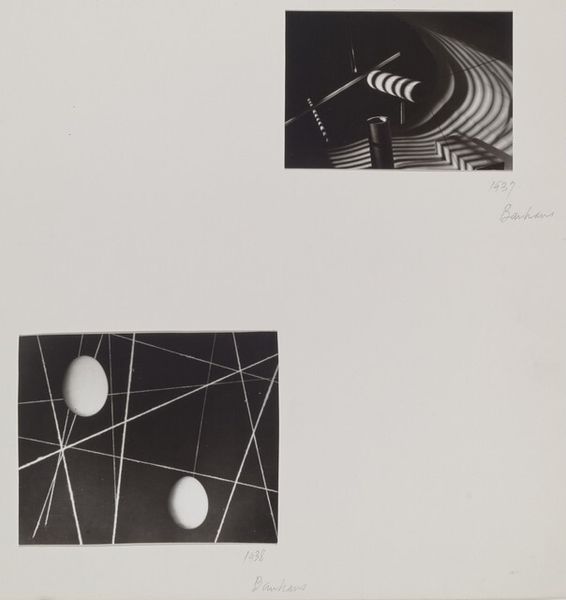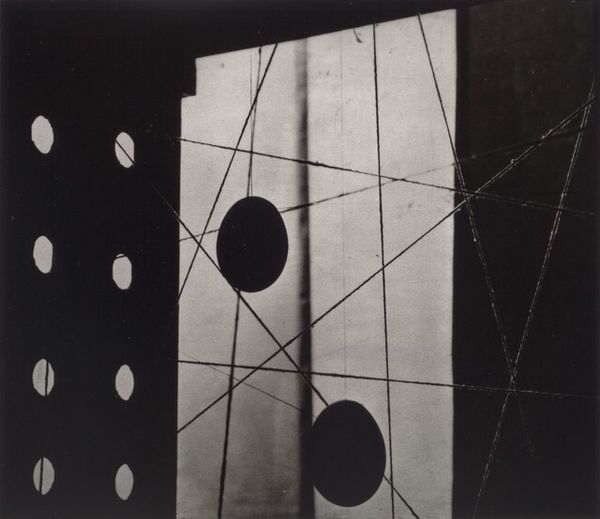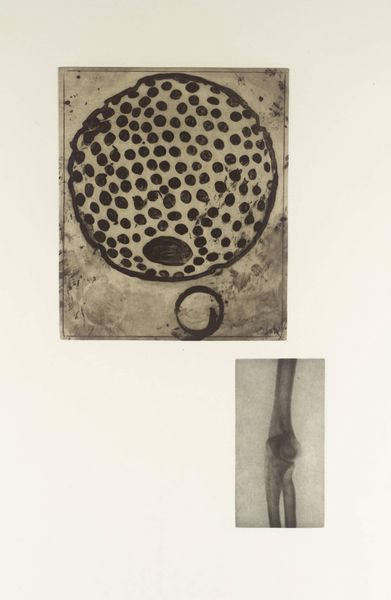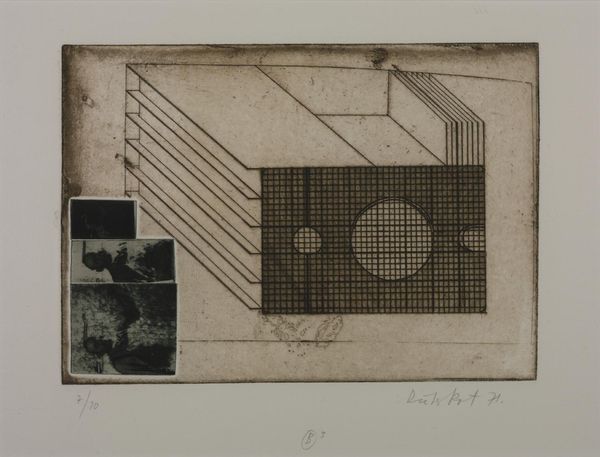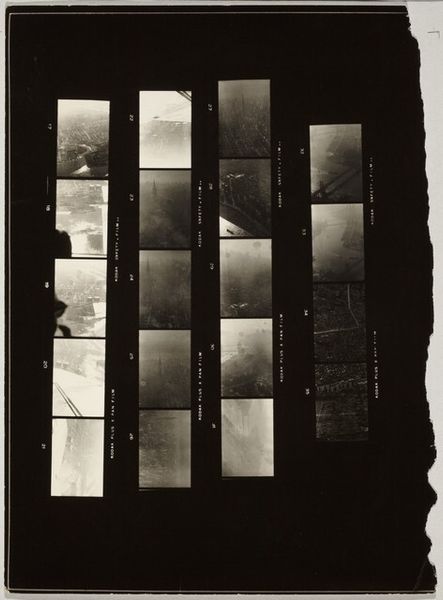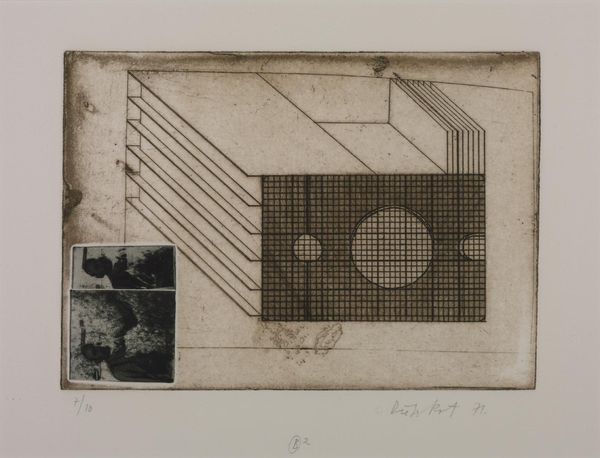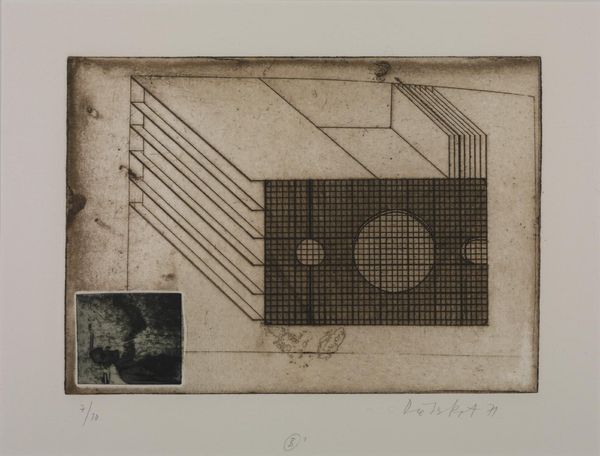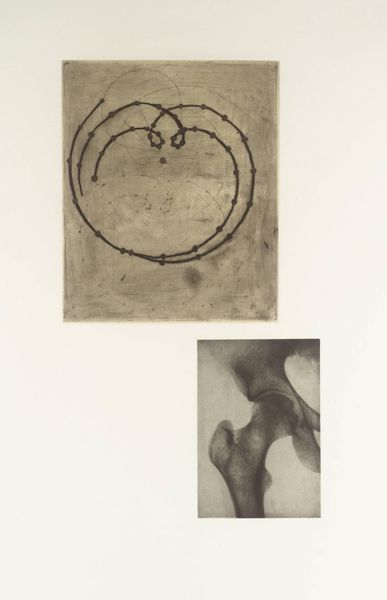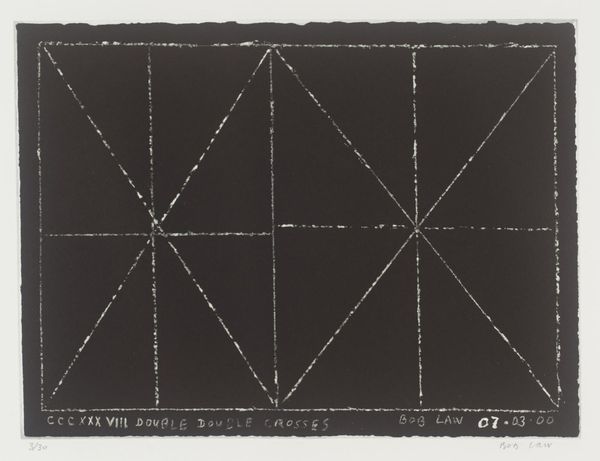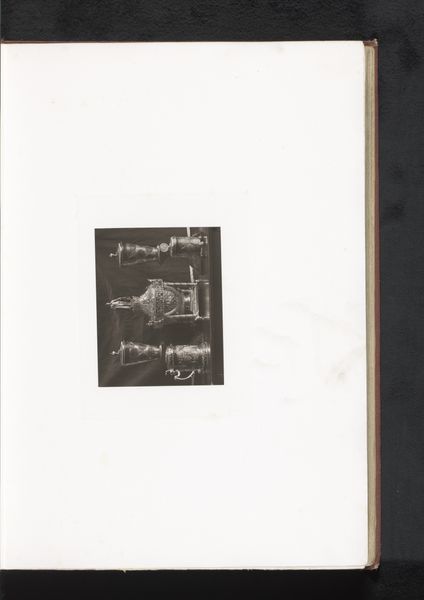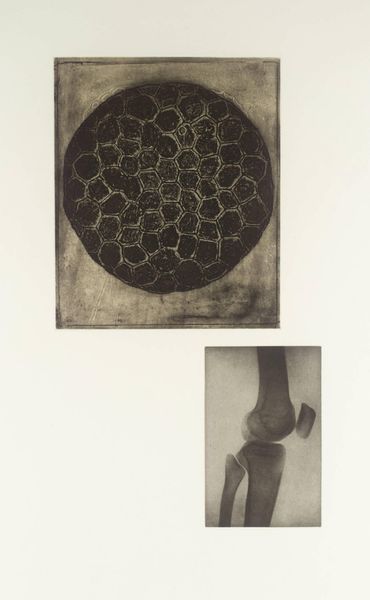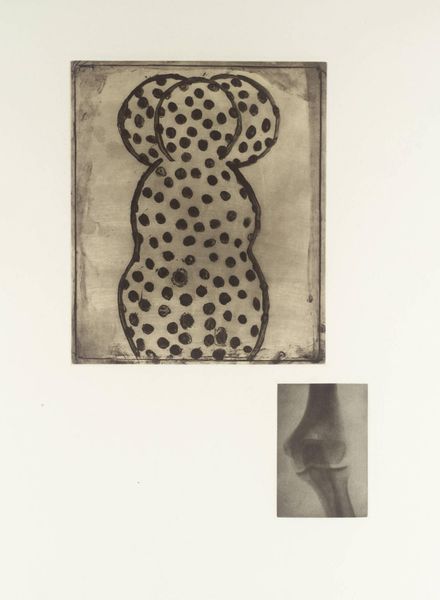
Dimensions: image (top): 11.9 × 13.4 cm (4 11/16 × 5 1/4 in.) image (bottom): 12 × 12.6 cm (4 3/4 × 4 15/16 in.) mount: 31.6 × 30.6 cm (12 7/16 × 12 1/16 in.)
Copyright: National Gallery of Art: CC0 1.0
Curator: Today, we’re looking at "Maquette, page 14" by Nathan Lerner, a work spanning from 1935 to 1944. What strikes you initially? Editor: The starkness. It's like looking at two separate worlds—geometric abstraction versus playful, almost childlike lines, all trapped in a high contrast monochrome. There's a real tension between control and chaos, no? Curator: Precisely. The work juxtaposes two distinct photograms: One a careful arrangement of shapes and lines, the other a more spontaneous, almost kinetic light drawing. Think about it, photograms themselves are cameraless, immediate—a dance between light and shadow. Editor: I'm seeing a strong nod towards Modernism. The geometric grid, the clean lines… it screams of a Bauhaus influence perhaps? A drive to find the underlying structure of form itself. Curator: Absolutely! Lerner, deeply influenced by the New Bauhaus, aimed to explore pure form. The grid, circles, and intersecting diagonals provide a structural logic to that top image. Whereas in the lower photogram, it seems more impulsive; pure energy captured. Editor: And isn't it interesting how the top one feels like architecture, controlled and planned, and the lower one, like an unbound gesture of calligraphy or dance. There's a rhythm. They almost play off each other, each somehow commenting on the other's limitations. Curator: That's key. Consider Lerner’s exploration— he tests the boundaries between precision and spontaneity, order and randomness, light and dark. There's a search for a fundamental language in art. Editor: It also makes you wonder about process—the darkroom experimentation, the joy in discovering these effects. These aren't simply photographs; they are artifacts of play, where accidents perhaps led to true innovations. Curator: Right. It pushes beyond representation. Instead of depicting the world, Lerner reveals the mechanics of seeing, light's inherent qualities. That's why I always return to it, it teaches me about looking, seeing... imagining. Editor: Agreed. There is something fundamentally provocative about Lerner's image and the relationship between these two visual styles. The two contrasting compositions offer viewers a beautiful tension that pushes back on our conventional way of viewing modern visual art.
Comments
No comments
Be the first to comment and join the conversation on the ultimate creative platform.
